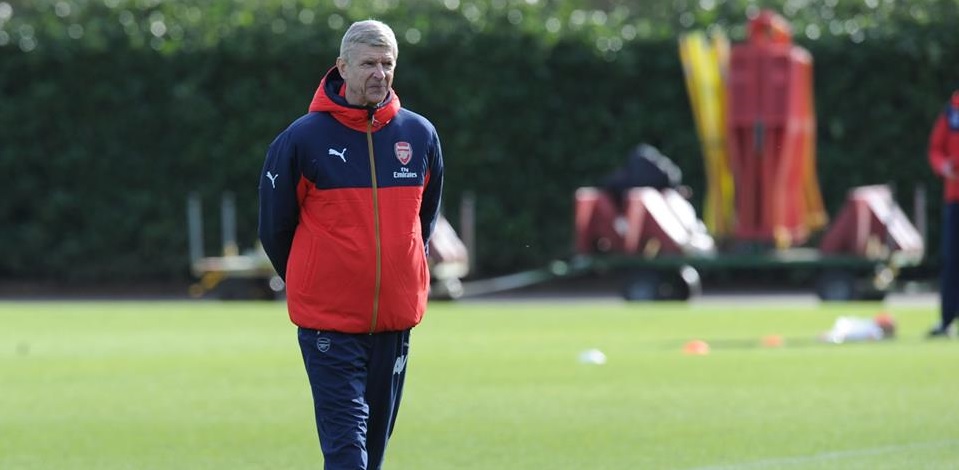Sprinting to stand still: Arsenal's summer transfer window (part 1)

Club football is currently compartmentalized. There are two spheres of competition that are dissected with equal spittle-laden fervor - the battle between football teams on the pitch to win matches, and the battle between football clubs off the pitch to win the transfer window.
The author finds it bizarre that signings are now cheered on harder than goals, transfer fees are now held up as valid metrics in online pissing contests, and transfer business is now conclusively opined on before said signings have had any time to make an impression.
This does not mean that rating a club’s transfer business in September is a moot task. If one takes into account the squad gaps a particular club had, how effectively it filled those gaps, and the reputation and skill-sets of the players it bought, one can easily run a broad good/okay/bad brushstroke over the club’s summer. But the transfer window should and will always be judged twice: once immediately after it happens, and once after the hubbub dies down, the players settle in, and the theory on spreadsheets melds into action on the pitch.
With that sobering preface out of the way, let us look at Arsenal’s summer business.
What was needed
The phrase ‘spinal surgery’ summed up the task facing Arsenal this transfer window. In midfield, Arsenal lost three wizened heads in Mikel Arteta, Mathieu Flamini, and Tomas Rosicky as their contracts expired. Their overdependence on Coquelin and Cazorla was exposed last season as both players got injured for a few months and Arsenal’s midfield dynamism stalled as a result. The astute transfer of Elneny from Basel last January brought a box-to-box tirelessness and versatility to the fold, but Arsenal still needed a dominant figure in the center of the park capable of dictating tempo, freeing other players to make runs, and spotting those runs.

 ©
© Up top, Arsenal’s search for a striker to replace Robin van Persie continued. Arsene Wenger had tried the efficient (Podolski), the workmanlike (Giroud), the gamble (Welbeck), and the outlandish (Sanogo), but still hadn’t found a replacement capable of replicating the innate creativity and match-winning contributions of the Dutchman. Giroud had proved an able, hard-working striker, but was prone to periods of goal drought with no one else to pick up the slack. The burden of goals needed to be shared.
Arsenal’s defense seemed well-sorted if ageing as pre-season began, with a center back roster of Koscielny, Mertesacker, Gabriel, and Chambers leading the Gunners to the second-lowest goals conceded last season (and the Golden Glove for Petr Cech). But, injuries to Mertesacker and Gabriel made a new defensive addition a priority. Moreover, with Mertesacker and Koscielny both on the wrong side of 30, a long-term option was ideally needed this season to avoid a scramble when Arsenal’s senior defensive statesmen did lose their mojo.
What Arsenal got
Granit Xhaka:
The Gunners filled their gap in midfield early by raiding Borussia Monchengladbach for their captain and midfield lynchpin. Born in Switzerland to Kosovan parents, Xhaka’s combination of skill, bite, and leadership ticks a lot of boxes for Arsenal.
Skill-wise, Xhaka’s clarity, verticality, and speed of passing are traits Arsenal were crying out for last season when Flamini and Ramsey often ended up in sterile, circuitous possession. Xhaka’s accurate lofted balls to Arsenal’s attackers against Watford were reminiscent of Fabregas in his prime, and if he continues to find those hitherto unrequited runs with his cross-field balls, he is likely to be involved in many Arsenal goal attempts this season.
Unlike many silky-toed midfielders, Xhaka marries his guile with grit. His telescopic leg was in evidence against Watford as he made quite a few well-timed tackles and interceptions. His tendency to leave the foot in can be a bane at times, as evidenced against Liverpool when he came on, committed a plethora of fouls, and picked up a yellow card. He was sent off in Germany three times last season, a stat any midfielder could do without. But if he retains that bite while exercising a smidgen more discipline, Xhaka can hit the sweet spot that raises Arsenal’s midfield to the next level.
For a manager who believes in having leaders all across the pitch, Arsene Wenger would definitely have taken note of Xhaka’s leadership and bravery at Monchengladbach. The 23-year old was made captain when Borussia were bottom of the league and eventually led them to a top-four finish, even playing with a broken rib in the closing stages of the season. There are germinant signs that he will enjoy being vocal on the pitch in North London, already being seen shouting at his teammates and organizing the markers during corners against Watford.
Since Vieira and perhaps Fabregas, Arsenal have lacked a midfielder who led through both words and action. Xhaka may have big shoes to fill, but his feet are growing with every passing game.
Arsenal’s pursuit of a striker took a familiar turn towards the pantomime this summer. They triggered Jamie Vardy’s release clause, but the 29-year old chose to stay at champions Leicester. They balked at the inflated transfer fees Juventus paid for Gonzalo Higuain. They enquired about Alexandre Lacazette but were put off by the surreal amount quoted by Lyon. Just when it seemed like another window would go by without a frontman arriving, Arsenal paid 17 million pounds for Deportivo striker Lucas Perez.
At first glance, this is a signing with fifty shades of grey. Perez cannot immediately be anointed the one-stop panacea for Arsenal’s striking woes. He does not hold the reputation of previous Arsenal targets like Higuain, Suarez, and Benzema. He turns 28 this week and only started playing as a striker last season, preferring to ply his trade on the wing before that. But Arsene Wenger’s thought process behind signing Perez can best be deconstructed by looking at Perez’s shared traits with Jamie Vardy, who was ostensibly Wenger’s first choice to fill the striking position this summer.
Like Vardy, Perez is blessed with explosive pace, a dogged determination to press defenders, and a strong, instinctive finish. Both players are late bloomers in their football careers, going through spells in lower leagues and relatively obscure footballing cultures before hitting their respective promised lands. When Vardy rejected Arsenal’s overtures, it is completely understandable that Wenger turned his eye towards someone whose career-graph and skills were mirrored by the Englishman’s.
Perez has had an itinerant career with spells in the Spanish third division, Ukraine, and Greece before joining Deportivo and blossoming at his boyhood club. He contributed 17 goals and 10 assists last season in a Deportivo team of modest chance-making ability, a season that also included a record-equaling seven game scoring streak. If Perez hits his stride in England, he can be a dangerous runner off the last defender, dovetail with Giroud, and even provide cover on the wings if required.
This is a signing for which the jury is still very much out, but Perez is used to fighting against the odds.
Skhodran Mustafi:
Arsenal’s wooing of Mustafi was a tale fraught with about-turns, posturing from Valencia, and a talking horse announcing a failed medical. After a long drawn out saga, the Gunners finally got their man for 35 million pounds, making Mustafi the most expensive defensive signing in Arsenal’s history. Although the 24-year old German’s stock has risen in recent years, his journey to the top has been difficult and replete with self-doubt.
Mustafi was a part of David Moyes’s Everton squad from 2009 to 2012 but failed to make a single appearance in the Premier League. This period hit his confidence, and he seriously considered the idea of giving up football. But from the doldrums came determination, and Mustafi climbed the long arduous ladder back, first at Sampdoria and then at Valencia.

 © Getty
© GettyPlaying-style wise, Mustafi has been schooled in both the Italian and Spanish ways of defending. He is positionally strong, has a good reading of the game, and had the most interceptions of any defender in La Liga over the past two seasons. He isn’t the tallest but is still aerially strong, and prefers to play the sweeper role owing to relative lack of pace. This Valencia fan thinks that Mustafi can form a strong partnership with Koscielny in theory, and it’s easy to see why.
Even in this crazy market, 35 million pounds is a steep amount for a defender who is still not from the very top drawer and especially coming from a usually parsimonious club like Arsenal. But Mustafi has many things going for him: young, German international and World Cup winner, proficient in English from his time at Everton, and capable of playing at right back if the need arises. Looking at the troubles other big clubs have had in procuring central defenders (Chelsea and David Luiz is a good encapsulation of how crazy the transfer window has become), Arsenal may find their money to be well spent if Mustafi hits the ground running.
In the second part of Arsenal’s transfer window review, we look at wild card Rob Holding, talk about some low-profile departures and high-profile loans, and discuss an underlying theme running through Arsenal’s summer purchases.
